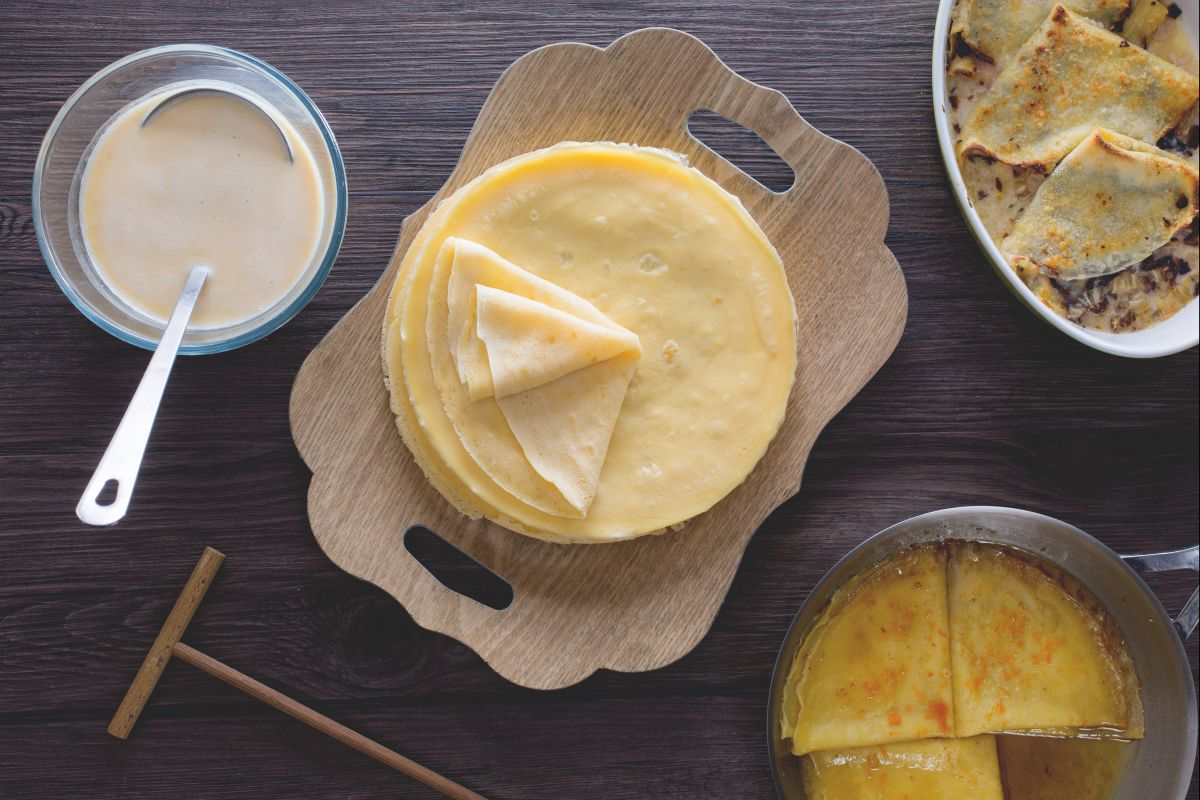Nutella crepes
- Easy
- 40 min


Golden, thin, and soft, American crepes always show up with plenty of charm on busy morning tables. A stack of these light, fluffy pastries looks inviting—their gently curved edges and flexible texture promise a DELICIOUS bite whether you go sweet or savory. Set them out for family brunch, holiday breakfast, or even a spontaneous weekday treat… they always bring everyone together for something fun and satisfying. Since sweet and savory crepes can handle just about any favorite filling, home cooks love pulling out all the stops: fruits, creamy cheeses, or a bit of ham and spinach. A drizzle of syrup for sweetness or a dollop of sour cream for a zesty twist—simple flavors blend right in. Kids get excited getting to build their own, and grown-ups LOVE the endless possibilities. Versatility defines these crepes because they let families pick what tastes good and feel confident it’ll look beautiful on any breakfast tray or brunch platter.
You could call American crepes the blank canvas of family meals. Bringing these to the table means quick options: roll them up with jam at breakfast, fold with turkey and cheese at lunch, or transform leftovers into something new for dinner. Because the base flavor is gently rich and not too sweet, the same batter works equally well for dessert—a scoop of ice cream or spoonful of Nutella makes every evening nicer. Inspiring all sorts of easy crepe fillings, they fit every meal plan, serve well at parties, and never go out of style. Using trusty homemade crepe tips ensures great, even results, too… so pretty much everyone can join in for family crepe night (let each person mix up their own combo if you want a little fun). Setting up a crepe bar turns regular gatherings into memorable ones—folks really like customizing their own plates! Whether you're thinking of new brunch ideas, searching for clever ways to use up what’s in the fridge, or just want something good and special for the kids, these crepes bring flexible, family-friendly results to every kitchen.
You might also like:

To prepare the sweet and savory crepes, start by breaking the eggs into a high-sided bowl 1, stir with a fork and add the milk 2. Mix thoroughly to mix these two ingredients 3.

Place a strainer on the bowl and sieve the flour into the bowl 4, (for convenience you can also add it in two steps, mixing to avoid lumps). Whisk vigorously to blend in the flour 5. Continue stirring until the mixture is homogeneous, smooth and lump-free 6.

Next, cover the bowl with plastic wrap and refrigerate for at least 30 minutes. This step is important to eliminate any lumps 7. After this time, mix the batter 8, butter a crepe pan (or a non-stick 8-inch (20 cm) pan) and heat it. Once it has reached the desired temperature, pour a ladle of batter in the skillet, enough to cover the bottom: you can use a special crepe batter spreader or rotate the pan until the mixture is evenly distributed (be careful not to spread it all over the sides to avoid having not enough batter in the center to create a crepe with an even surface); for best results, work quickly, as the batter will harden very fast. 9

After about 1 minute over medium-low heat, you will notice a slight browning, the edges will tend to curl up and you can turn the first crepe using a spatula 10. Cook the other side for about 1 minute, waiting for it to turn a golden color 11. Once the first crepe is cooked, transfer it to a serving dish or chopping board. Repeat these steps until you use up the batter. You should get 8 eight-inch (20 cm) crepes: stack them up so they stay soft. Here are your sweet and savory crepes ready to be filled 12!